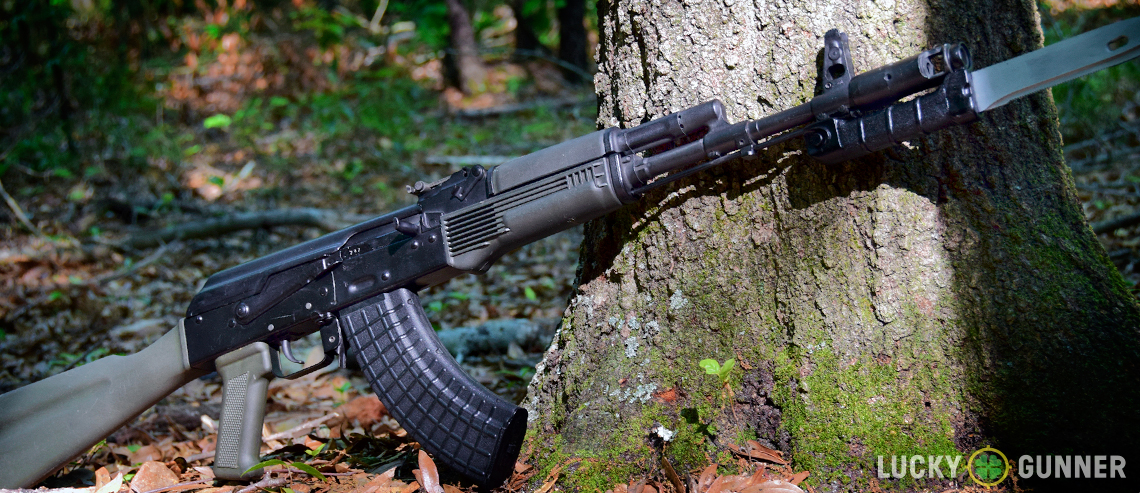Looking for a inexpensive blaster with a legendary reputation for reliability, close ties to history and an appetite for inexpensive hard-hitting rounds? How about a diehard bug out gun with more than 60 years of battlefield-proven effectiveness chambered in a round with ballistics close to a 30-30? The answer is the same but also different. The AKM. With enough variants to fill countless tomes of information, buying an AK can be an overwhelming experience. Thankfully, shooters can simplify it by answering a few simple questions on what they expect and need out of their first Soviet lead-slinger.
The first thing shooters should do when deciding on a Kalashnikov rifle is figure out what they want to do with their AK. Most would-be AK buyers fit into one of two categories: practical shooters and shooters in love with the idea of an AK-47.
The former group has a much easier time buying a first rifle because certain variants objectively perform better than others. The second group is more tricky, since they’ll have to decide what a “true” AK is to them. Fortunately, there are a number of excellent options to choose from for either of these groups. We’re going to look at a few select rifles that might be considered “high-end” performance AKs as well as a few bare-bones AKs. And finally, there are a couple of American-made AKs that fall more toward the “performance” end of the spectrum but with more of a bias toward modularity.
Performance AKs
If you count yourself among the form follows function group, your choices are narrowed to three companies: Arsenal, Izhmash and Molot. Depending on which aspect of the rifle’s performance is most important to a shooter, they can further hone this selection down to a single company.
Russian VEPR

If accuracy is the most important property for your ideal AK, a Molot VEPR is the ideal rifle for you. Built on the same heavy-duty receiver as the Russian military’s RPK, a light machine gun, the VEPR is built to standards far exceeding those of mil-spec rifles. Additionally, VEPR rifles use heavier barrel profiles, and are available in multiple barrel lengths. The problem with VEPR rifles is the cost of ownership, and limited aftermarket support.
Due to the design of its handguard and receiver, the Molot VEPR uses its own proprietary furniture and magazines. So unlike shooters who opt for a mil-spec gun, VEPR-owners won’t have access to the robust, inexpensive parts market. The rifle can be modified to utilize standard AK-47/AKM magazines, but this requires some mechanical knowhow as well as the legal savviness to ensure the rifle then meets the requirements of 922r.
Russian Saiga
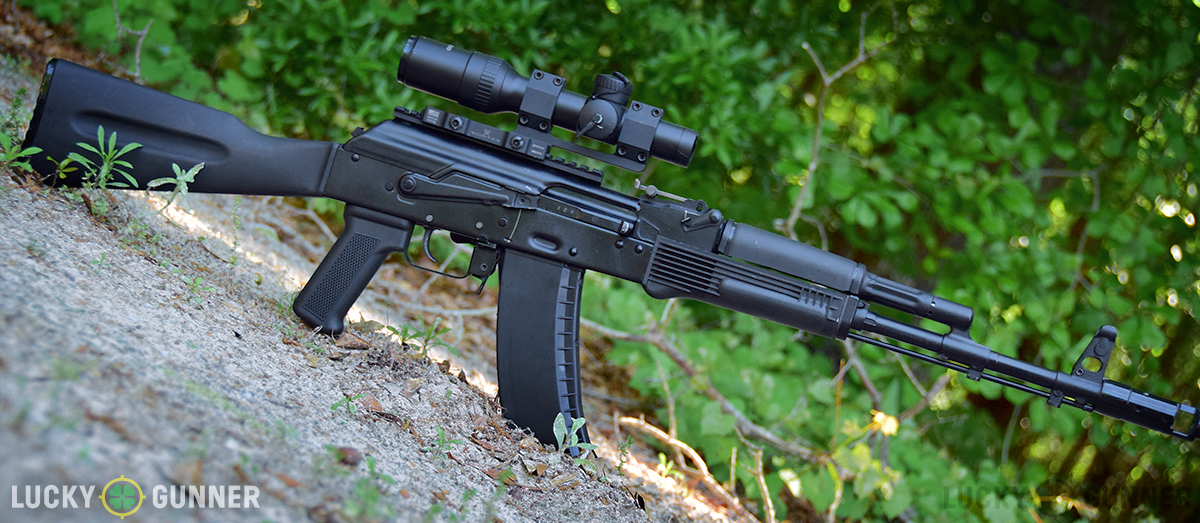
Practical shooters who want a thoroughbred Russian AK rifle should pick up an Izhmash Saiga rifle converted by a reputable AK builder. A couple of those builders are Arsenal of Las Vegas, Kreb’s Customs or Legion USA. Since the recent ban of further imports, this is going to be a more costly option than in years past. Though given their Russian heritage and ever-shrinking supply, these rifles will undoubtedly increase in value if properly maintained.
If cost of ownership and parts compatibility isn’t important to you, you can leave the Saiga in its imported, hunting configuration. These shooters are restricted to low-capacity magazines and have limited furniture options, since the trigger assembly is located further back than standard AK rifles.
While standard capacity magazines do exist for unconverted Saiga carbines, it’s illegal for shooters to use them without first ensuring they have enough US-made parts to meet 922r compliance.
Bulgarian SLR
This leaves one final option for performance junkies; Arsenal of Las Vegas. Arsenal builds and imports AK-pattern rifles from Russia and Bulgaria.
Arsenal may be best known for their SLR-series of Bulgarian carbines, which are near-perfect facsimiles of their full-auto brethren. These rifles are on par with Saiga carbines in terms of fit, finish and accuracy – though both are slightly inferior to VEPR rifles. Though cost of ownership on both Arsenal and converted Izhmash rifles is exceptionally low; most magazines are under $20 and only the folding-stock variants of either require special parts. The fixed-stock versions of both utilize standard AKM-pattern furniture which is both plentiful and inexpensive.
One additional bonus for shooters living in areas with an assault weapons ban in place is that pre-ban magazines are plentiful for AKM rifles, and thus both of these guns.
Form vs. Function vs. Price
The reason people who want a traditional AK might not want any of the above rifles, deals primarily with their furniture types. Where most people imagine a wood-stocked, all-steel war-machine when imagining an AK-47, modern examples of the rifle utilize polymer furniture instead. Which is objectively superior in terms of performance and weight savings, though is detracts from the classic AK appearance. Another reason shooters might shy away from these three markers is price.
Most buyers assume AK rifles are inexpensive, crudely-made weapons. Extrapolating that their rugged appearance and loose tolerances are responsible for the carbine’s legendary reliability and affordability in the past. But this couldn’t be any further from the truth. The AK rifles of yesteryear were affordable because they were constructed by a country that had inexpensive labor costs and previously-existing machinery for the guns. That lowered the price of the units, since they were cheap to produce and cheap to tool up for.
This is important because shooters looking at more recent offerings from Arsenal or Legion while only hearing internet legends of $60 SKS rifles and $99 Norinco MAK-90s will experience sticker shock. Most Arsenal AK rifles are close to or exceed $1000.
Are they worth it? I believe so, but I like owning a gun that not only runs reliability, but also hits what I’m aiming at while providing peace of mind that I’ve purchased a military-grade AK.
Bare Bones AKs
What about shooters who simply want to plink or have a man-accurate carbine out to 200 yards?
These shooters are part of the earlier group mentioned, those in love with the idea of an AK rifle. There’s nothing wrong with that, my first semi-automatic rifle was a Romanian WASR-10. I purchased it because of its reputation for reliability, and because it looked cool as hell.
So for shooters who either want a classic AK or simply a more affordable option, there are several makes available. Since several builders offer their services using American-made receivers and foreign part kits, I’m going to recommend rifles based on the origin of their parts kit and their builder; since both are equally important.
While the Soviet Union has several satellite nations it saw fit to equip with Avtomats, only a handful have been imported to the US in substantial numbers. Other variants do exist, but they are often much more expensive because of their rarity, not increased quality. That said any of the following make for good, reliable weapons if properly assembled.
Romanian WASR
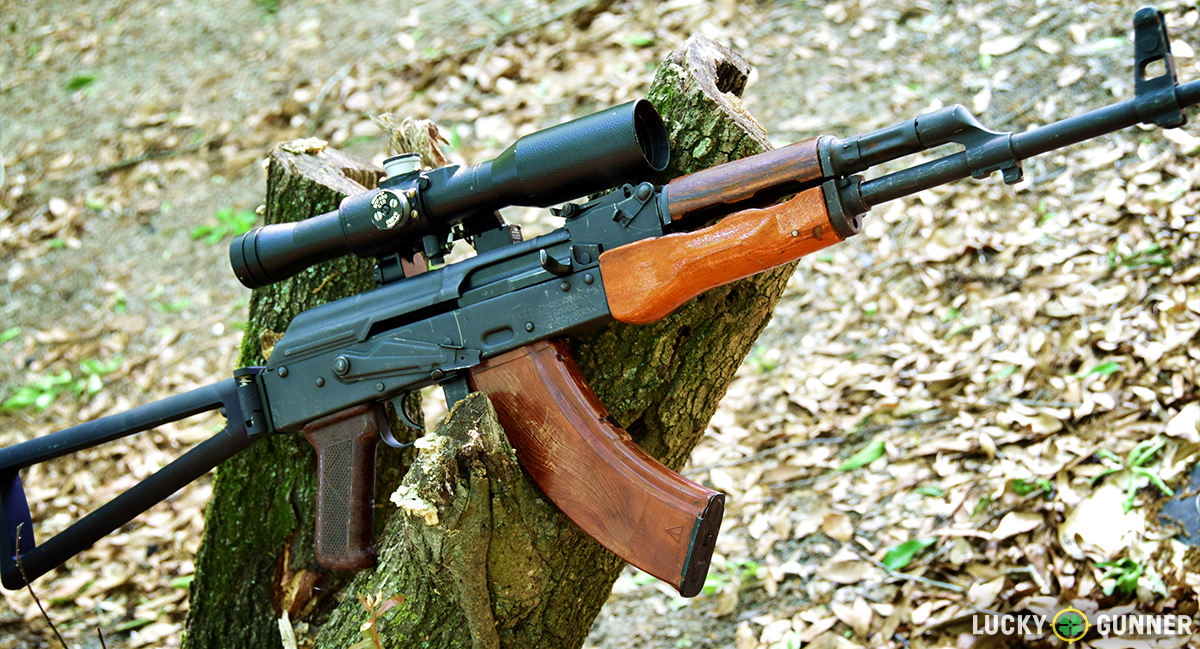
The least expensive classic-appearance option is the most prolific semi-automatic Kalashnikov-pattern rifle in the United States, the WASR, or Wassenaar Arrangement Semiautomatic Rifles. Notorious for their inaccuracy and poor build quality, these rifles are responsible for the majority of the internet myths surrounding imported AK rifles today.
Just like everything else on the net, the reports surrounding them are grossly exaggerated and often totally incorrect. While it’s true that many of the rifles imported by Century Arms suffered from canted iron sights, this wasn’t due to anything Century themselves did. Most people fail to realize that during the height of the purported built issues, Century simply widened the magazine well for double-stack mags, and never touched the barrel or sights.
Still, this reflects poorly on the rifle’s reputation, and rightfully so. Older builds from around the year 2001, were hurriedly built once the AWB ended, in anticipation of huge orders. Newer models rarely suffer from canted sights or severe magazine wobble, but shooters should closely inspect any WASR they intend to buy in person, if possible.
Serbian N-PAP
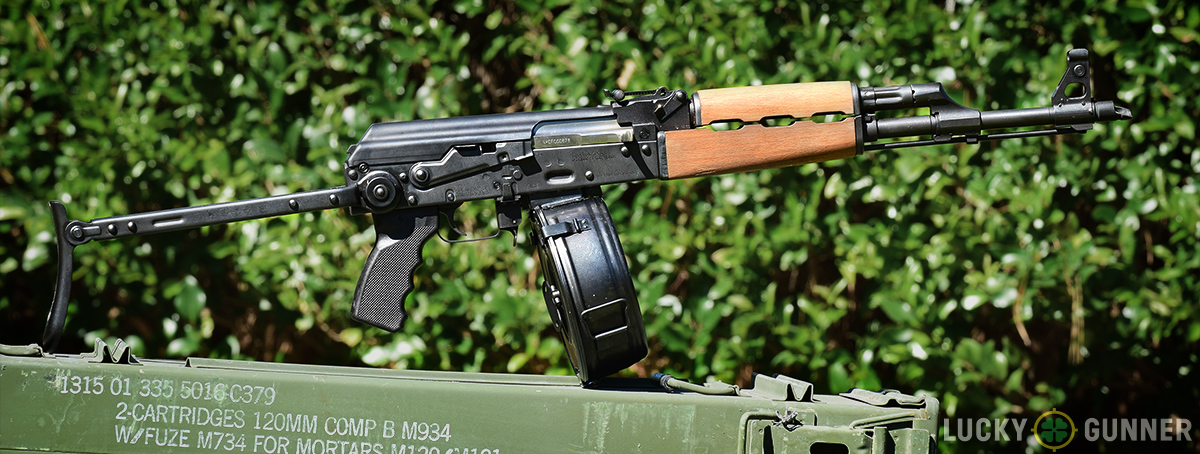
An additional Century-imported option is the Serbian PAP rifle. Featuring a more robust receiver and a stainless steel barrel, PAP rifle build-quality is above the majority of AK rifles on the market. They use standard AKM magazines and pistol grips, but that’s where the similarities to AK rifles end.
Yes, they operate identically to AKM or AK-47 carbines, but when Serbia was still Yugoslavia, the military decided to modify the Kalashnikov design to better suit their armed forces’ needs. This presents an issue in terms of cost of ownership, and aftermarket parts availability.
While the most important accessory, magazines, are interchangeable; handguards, dust covers buttstocks and side rails aren’t. Shooters who are happy to use their AK as it comes from the factory, can safely buy the PAP, a few magazines and be happy.
Though anyone who wants access to the robust AK accessory market, should steer clear of this variant, because most AK parts are either incompatible or require extensive modification to fit the rifle.
Hungarian AK63D
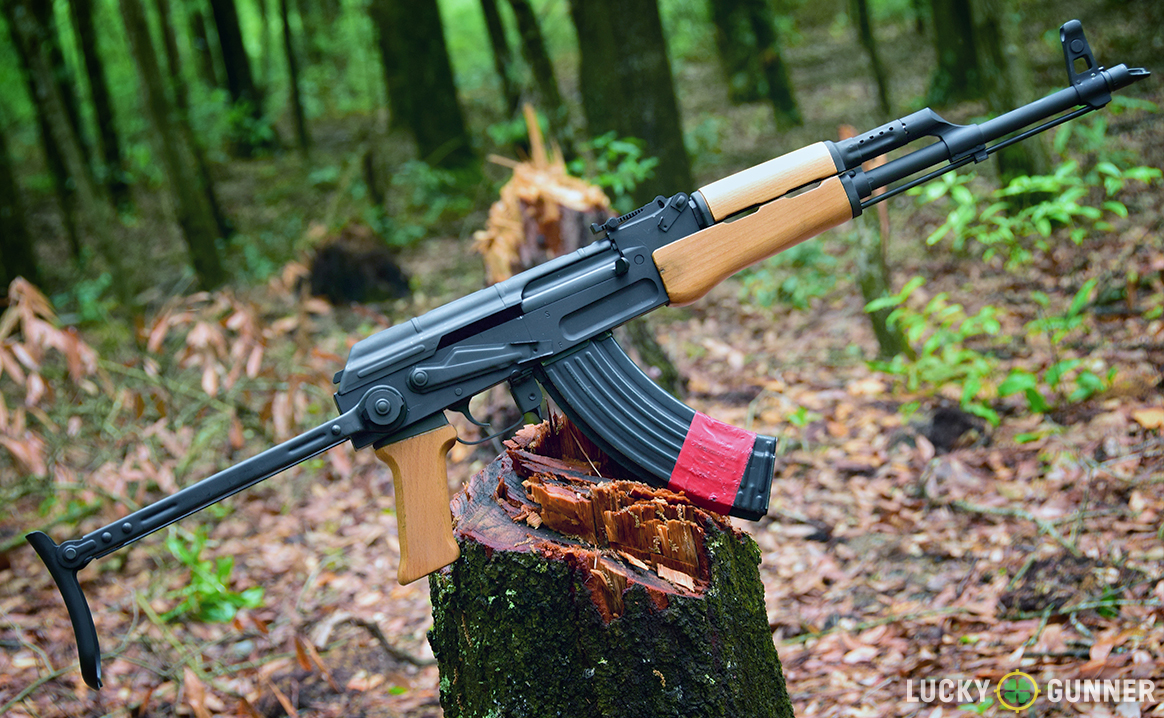
Another classic option also imported by Century Arms, is their new AK63D rifle. This rifle is built from a stamped receiver Hungarian AK63 parts kit on a new Century C39v2 milled receiver. It may be a franken-rifle, but it’s extraordinarily well-built, and uses stamped AK furniture. So kitting out the rifle won’t require special parts.
The only difference between Hungarian rifles and other country’s AKs, is the pistol grip and muzzle brake. While the Century 63D lacks the tank-style brake commonly found of AMD-65 Hungarian side-folding select-fire rifles, it still retains the odd pistol grip design.
Thankfully, shooters who don’t find the odd grip appealing, can simply replace it with any standard AKM pistol grip. The stock on these rifles, however is an underfolding type, which actually requires a special receiver or rear trunnion.
Chinese MAK 90, Egyptian Maadi
Two other semi-common rifles are Egyptian Maadi rifles and Chinese MAK 90 carbines. The Egyption rifles are identifiable by their arabic inscriptions, but are otherwise basically the same as any other AKM carbine. Some models, like the ARM variant, use a thumbhole stock, but are far less common.
As for the Chinese MAK 90 or Type 56 rifles, these rifles are as near to a Russian-built AK carbine as anything ever imported. Earlier models featured standard AK stocks, pistol grips and even iconic folding spike bayonets. Later models did away with these features in favor of a thumbhole stock and featureless barrel (one lacking a bayonet lug and threaded muzzle) to comply with an importation ban on Chinese weapons.
While a very capable rifle, they are cost prohibitive since they haven’t been imported into the united states since 1994, when the assault weapon ban listed them by name. These rifles only differ from standard AKM carbines in their inclusion of a hinged spike bayonet and hooded front sight post.
American AKs
Shooters who value modularity above all else will be happy to know many all-American AK rifle-makers exist who produce unconventional, but more versatile AKM carbines.
DDI AK47
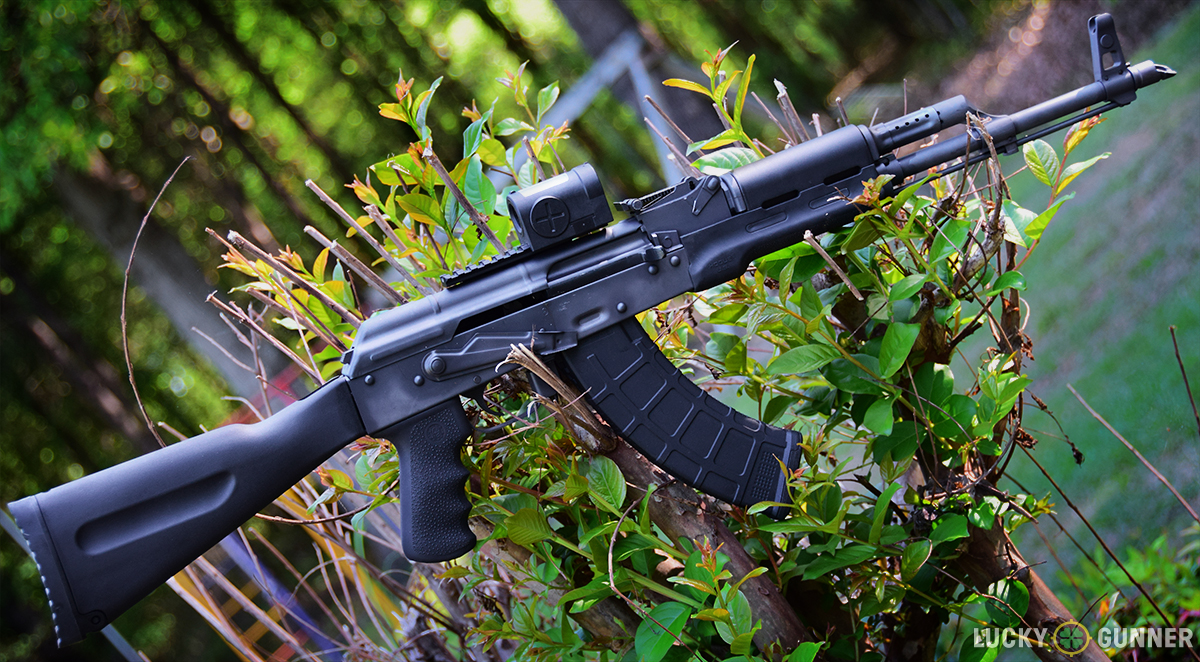
The first, is a relative newcomer to the AK market, Destructive Devices Industries, or DDI. They produce both a stamped and milled-receiver AKM rifle derived from Bulgarian SLR carbines. The former of which are available from the factory with American-made Hogue rubber furniture and XS big-dot iron sights – a far cry from the post and notch standard featured on all other AK rifles.
The other thing that separates DDI from other makers is the finish they use on their rifles. A result of a proprietary super-heating process, DDI carbines have a flat dark grey outer-finish called Fenocite. The surface is ultra-hard and resists most solvents as well as rust.
Century Arms C39v2
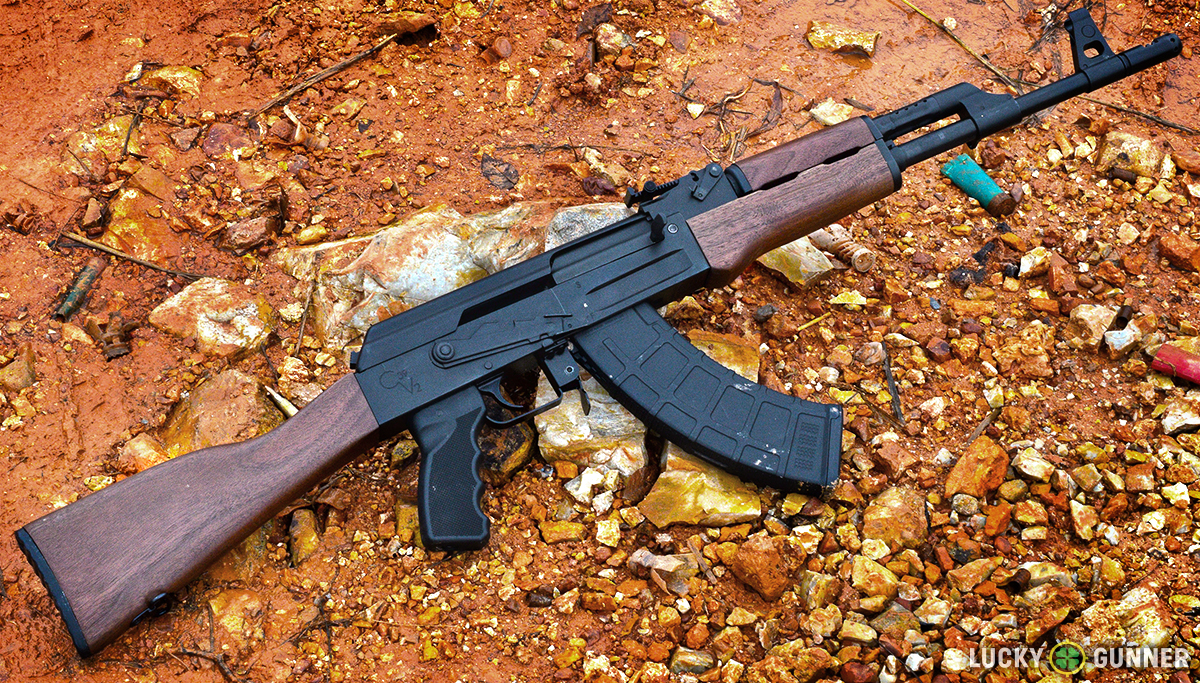
When it comes to unconventional AKs, the Century C39v2 wrote the book. Utilizing a strange amalgamation of milled-receiver-specific and stamped-specific parts, the C39v2 is a strange Chimera of an AK.
That said, it also has one of the smoothest actions, safety levers and magazine release paddles available on AK rifles. It also ships with American-made Magpul AK PMAGs, one of the best domestic AK magazines in existence.
Century also produces a stamped version, the RAS-47, that differs from the C39 by the inclusion of a Century-specific side rail, use of AKM furniture and a more traditional slant muzzle brake.
The AK Golden Age
20 years ago buying an AK was a crap shoot; most gunsmiths wouldn’t touch them, and aftermarket support was basically non-existent. Today, thanks to the sunset of the Federal Assault Weapons Ban and the age of Youtube, AK rifles are more popular than ever.
Due to the ever-increasing market size of AK vendors, most companies that produced sub-par products have gone the way of the dinosaur. Which is obviously great news for the consumer, as they now have a substantially lower risk of purchasing a lemon. Those that do, benefit from the increasing popularity of heavily-warrantied products that social-media-savvy consumers can enforce with a single photograph. The days of ultra-cheap AKs may have ended, but the era of quality domestically-built ones is only just getting started.
